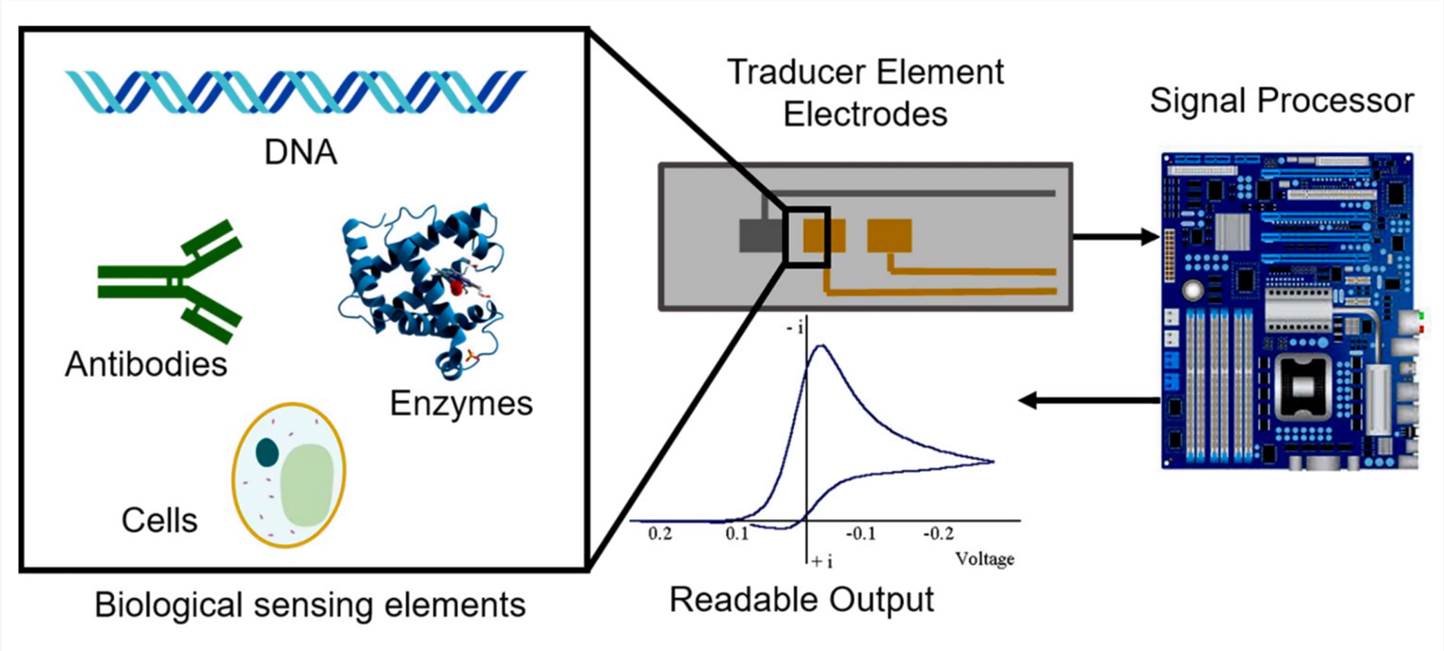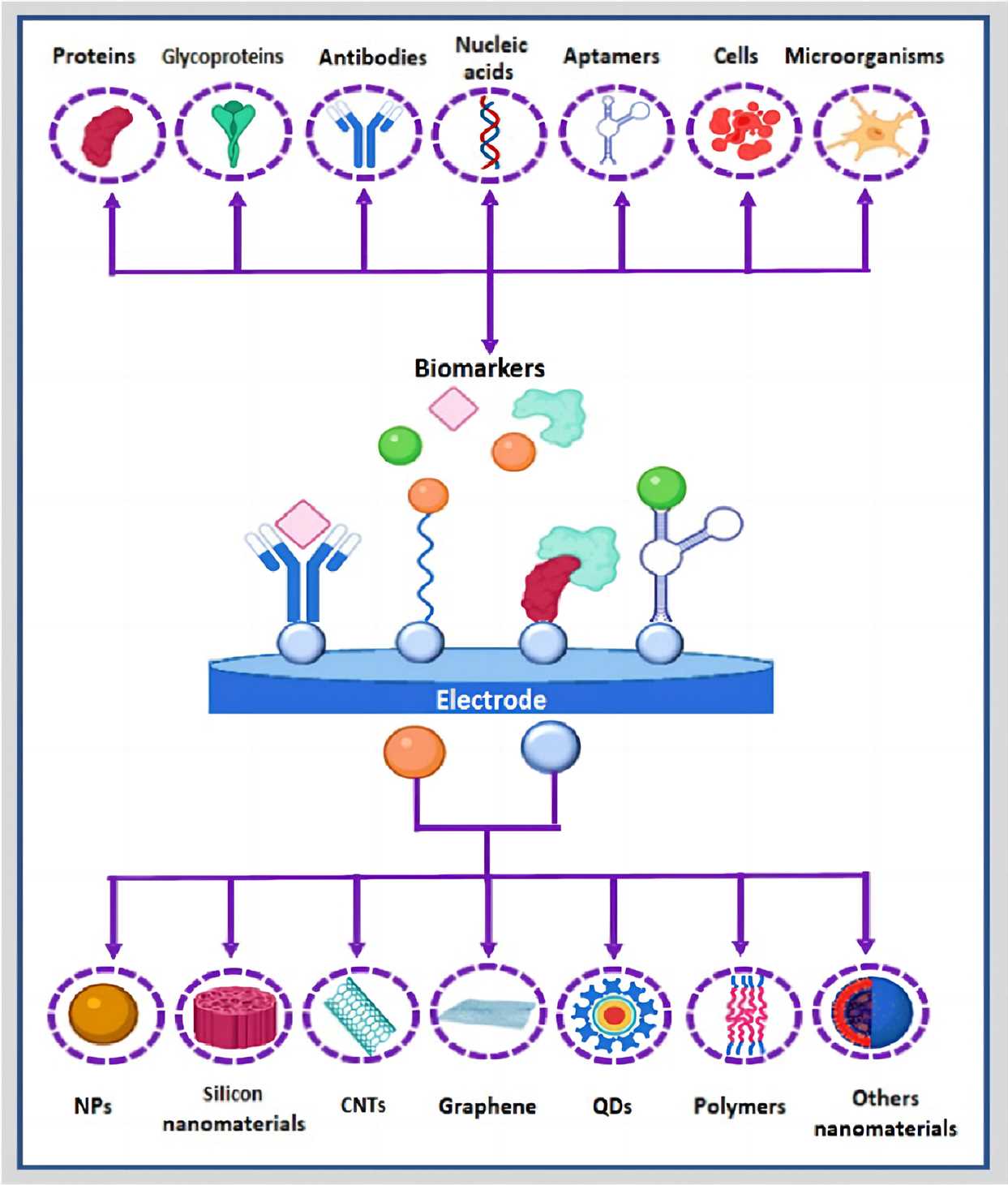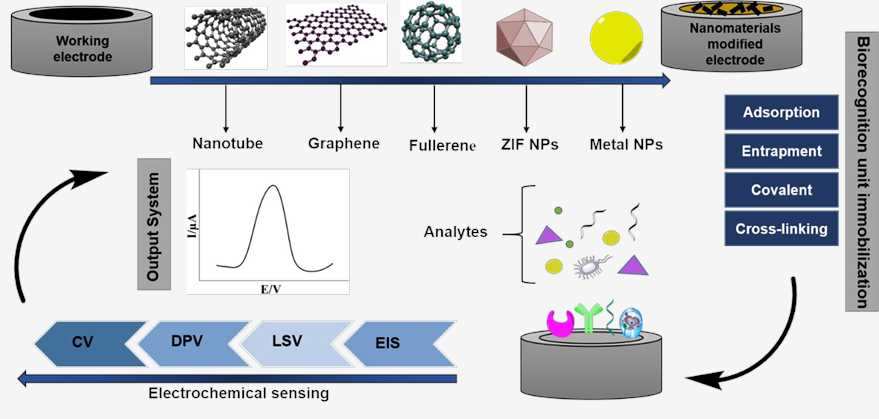eSensor Introduction
The electrochemical biosensor (eSensor) is one of the typical sensing devices based on transducing the biochemical events to electrical signals. In this type of sensor, an electrode is the key component that is employed as a solid support for immobilization of biomolecules and electron movement. Electrodes allow the conversion of biological signals into a readable output signal. The selectivity and sensitivity of these signals can be achieved via modification with specific biological elements such as DNA, enzymes, or cells as shown in Fig.1. Based on the type of transducer, electrochemical-based techniques can be categorized as potentiometric, amperometric, and conductometric.
 Fig.1 Diagram illustrating the structure and operational principles of an electrochemical biosensor.1, 4
Fig.1 Diagram illustrating the structure and operational principles of an electrochemical biosensor.1, 4
Thanks to numerous nanomaterials (NMs) that possess the large surface area, synergic effects are enabled by improving loading capacity and the mass transport of reactants for achieving high performance in terms of analytical sensitivity. Fig.2 represents main constituents of a NM-based electrochemical biosensor.
 Fig.2 Scheme of electrochemical biosensors decorated with multiple nanomaterials.2, 4
Fig.2 Scheme of electrochemical biosensors decorated with multiple nanomaterials.2, 4
Application of Electrochemical Biosensors in IVD
Classical in vitro diagnostics require centralized laboratories, tedious work as well as large, expensive devices. eSensors have emerged as valuable alternatives to conventional diagnostics and proposed for detection of various diseases based on specific biomarkers. In the detection of diseases, various strategies have developed based on specific biomarkers. To our knowledge, antigens/antibodies, DNA/RNA series, enzymes are the most commonly used.
 Fig.3 Label-free electrochemical cancer biosensors.3, 4
Fig.3 Label-free electrochemical cancer biosensors.3, 4
Outlook
eSensors have been proved to offer advantages such as real-time monitoring, simplicity and cost effectivity, and they exhibit good sensitivity and selectivity under optimized conditions. In order to fully realize the real-time detection of pathogens, key improvements must be made to electrochemical biosensors, which are ongoing areas of research. These areas mainly focus on:
- Lowering limits of detection (LOD) for early stage monitoring
- Decreasing detection time
- Detecting targets from unprocessed complex matrices extremely bodily fluids
- Identifying specific pathogen from polymicrobial samples
For more information, please refer to the following content.
Electrochemical DNA Biosensor
Electrochemical Immunosensor
CTC Electrochemical Biosensor
Glucose Electrochemical Biosensor
Electrochemical Biosensor for Small Molecules Detection
Hydrogen Peroxide Electrochemical Biosensor
References
- Hernandez-Vargas, Gustavo, et al. "Electrochemical biosensors: A solution to pollution detection with reference to environmental contaminants." Biosensors 8.2 (2018): 29.
- Soto, Dayana, and Jahir Orozco. "Hybrid Nanobioengineered nanomaterial-based electrochemical biosensors." Molecules 27.12 (2022): 3841.
- Sanko, Vildan, and Filiz Kuralay. "Label-Free Electrochemical Biosensor Platforms for Cancer Diagnosis: Recent Achievements and Challenges." Biosensors 13.3 (2023): 333.
- Distributed under Open Access license CC BY 4.0, without modification.
For Research Use Only.

